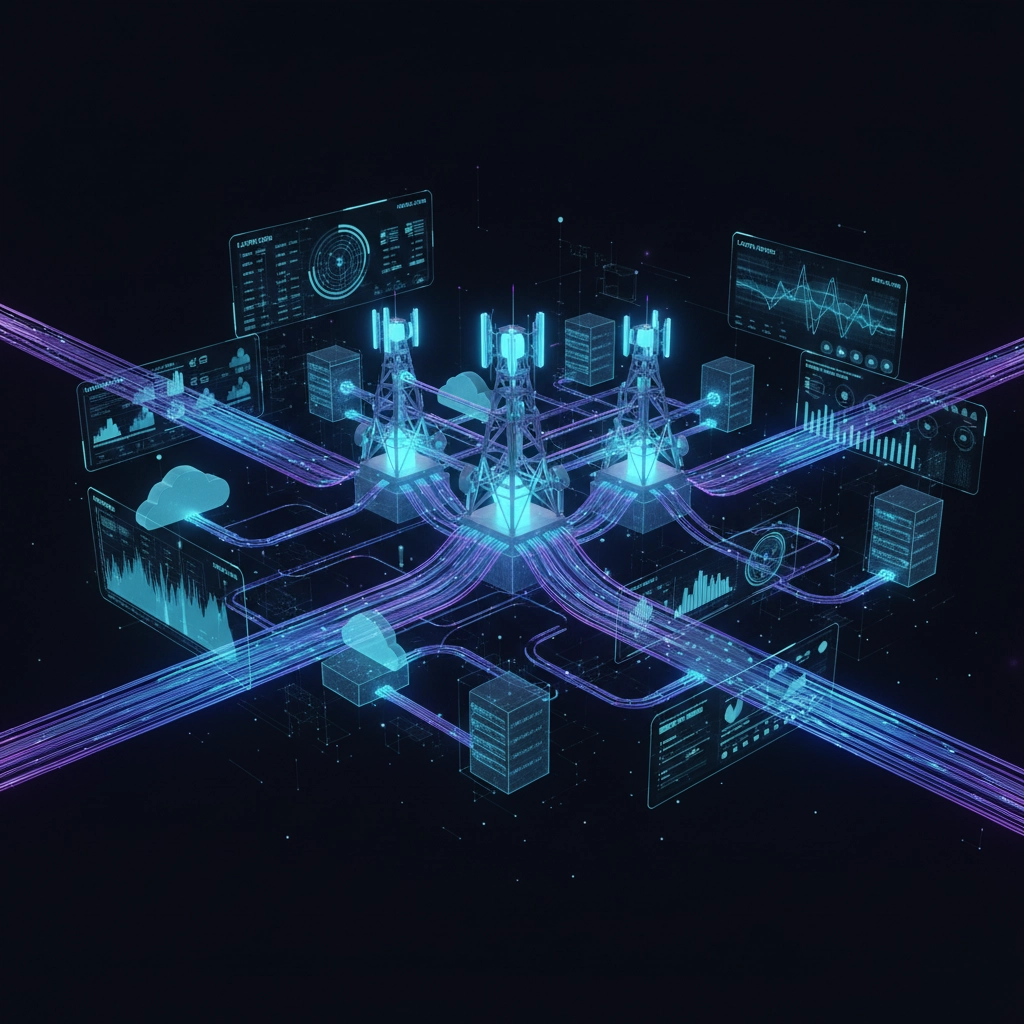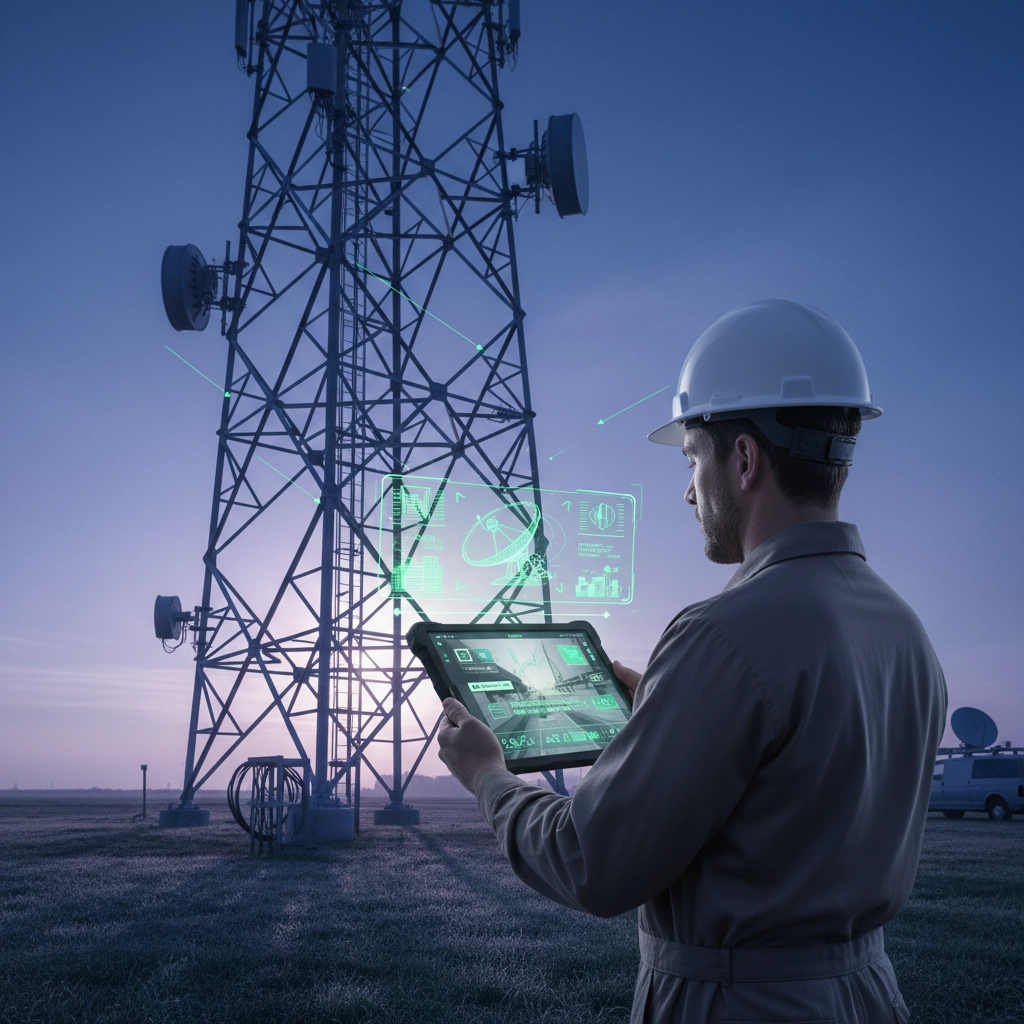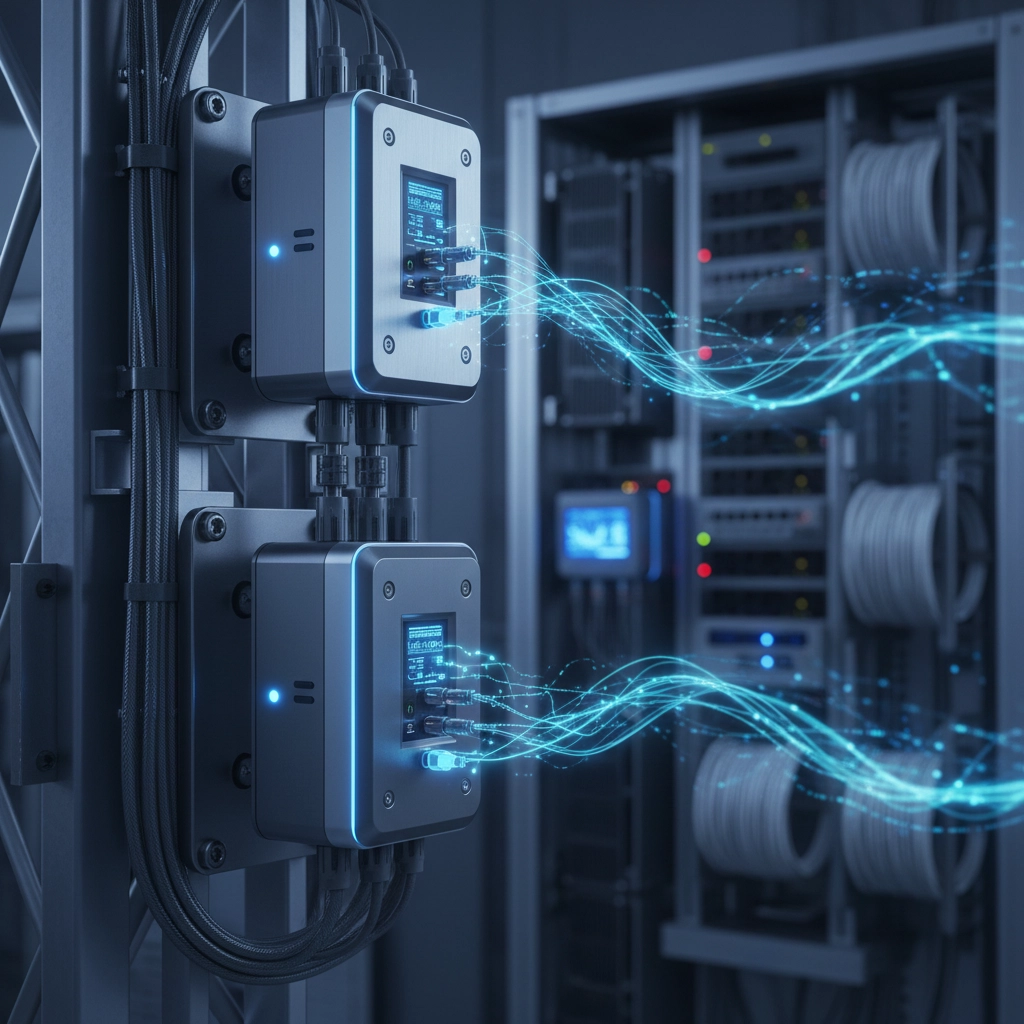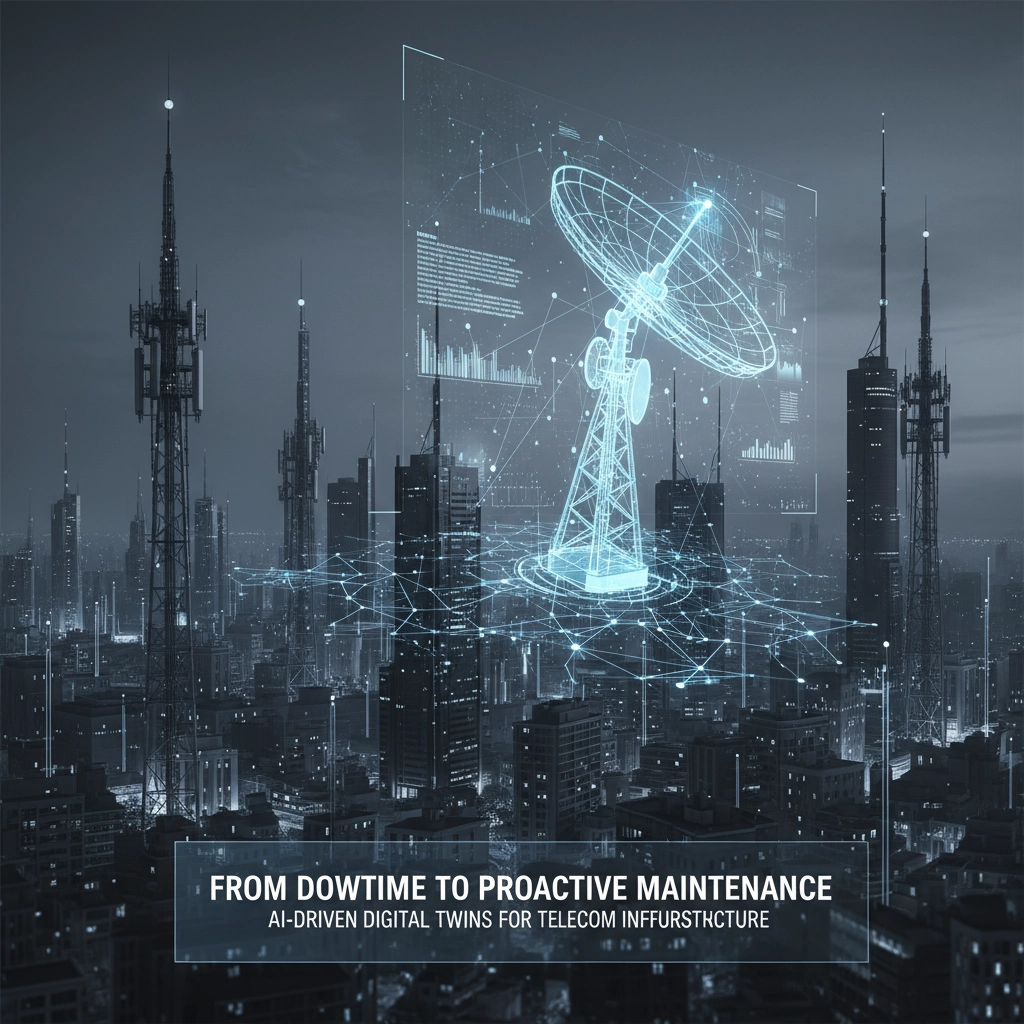The telecommunications industry stands at a pivotal moment. Network downtime costs operators millions annually, while customer expectations for seamless connectivity continue to soar. Traditional reactive maintenance approaches: waiting for equipment failures before taking action: are no longer sustainable in our hyper-connected world.
Enter AI-driven digital twins: virtual replicas of physical telecom infrastructure that are revolutionizing how operators maintain, optimize, and scale their networks. These intelligent systems are enabling a fundamental shift from costly downtime to predictive, proactive maintenance strategies that keep networks running smoothly while dramatically reducing operational costs.
The Evolution from Reactive to Proactive Maintenance
For decades, telecom operators have operated under two primary maintenance models: reactive repairs after failures occur, or scheduled maintenance that often leads to unnecessary service interruptions. Both approaches are expensive and disruptive.
AI-powered automation and predictive maintenance are changing this landscape entirely. Recent deployments have demonstrated network outage reductions of up to 50% while saving operational costs by up to 40%. This dramatic improvement stems from the ability to predict and prevent issues before they impact service delivery.
Major telecom vendors including Cisco, Juniper Networks, and Nokia are now integrating AI agents into their platforms to support this transformation. As the industry evolves toward 5G, IoT, and edge computing, these AI-driven systems become increasingly critical for maintaining customer-centric and reliable operations.

Understanding AI-Driven Digital Twins in Telecom
Digital twins in telecommunications represent sophisticated AI-powered virtual replicas of physical network infrastructure that simulate real-world operations in real-time. These models serve as safe testing environments where network configurations can be optimized and performance tested without risking live networks.
The technology has gained significant traction among industry leaders:
Vodafone utilizes digital twins to simulate 5G network slicing, running over 1,000 configuration scenarios in their virtual environment to reduce service disruption risks. AT&T leverages these systems for data analysis to predict and prevent network outages, with their platform analyzing petabytes of data daily.
Deutsche Telekom employs digital twins for core network optimization, while BT Group has scaled their digital twin environment to manage over 10 million network elements. These implementations demonstrate the technology's scalability and real-world applicability.
Technical Implementation and Real-World Results
The integration of AI with digital twins creates dynamic environments that revolutionize telecom operations through several key mechanisms:
Autonomous Experimentation
AI agents interact with digital twins independently, testing new configurations and resource allocations while learning from each simulation to minimize latency. This capability enables continuous optimization without human intervention, significantly reducing the time between identifying improvements and implementing them.
Predictive Analytics at Scale
Big data enables AI agents to predict network behavior, from traffic spikes to equipment failures. AT&T's implementation has resulted in a 40% reduction in downtime according to their 2024 report. The system's ability to process vast amounts of data and identify patterns invisible to human operators represents a quantum leap in maintenance capabilities.
Continuous Optimization
Real-world scenario simulation allows for testing AI agent performance in bandwidth allocation and load balancing. Deutsche Telekom's AI-powered digital twins have achieved a 20% increase in network efficiency and reduced operational costs by 25% according to their 2024 Annual Report.

Multi-Agent Systems and Collaborative Intelligence
The future of telecom maintenance lies in multi-agent systems where specialized AI agents work collaboratively to automate different tasks, particularly security-oriented aspects such as anomaly detection, monitoring, and automated recovery.
China Mobile exemplifies this approach by employing multi-agent AI systems within digital twins to coordinate rapid response to various scenarios, including simulated cyberattacks and network outages. These collaborative systems represent a significant advancement over traditional single-point solutions, as they can address multiple aspects of network management simultaneously while learning from each interaction.
Key advantages of multi-agent collaboration include:
- Specialized expertise: Different agents focus on specific network components or functions
- Parallel processing: Multiple issues can be addressed simultaneously
- Continuous learning: Agents share insights and improve collectively
- Resilient operations: System continues functioning even if individual agents encounter issues
Impact on Field Service Operations
Digital twins are revolutionizing field service management for Communication Service Providers (CSPs) by enabling them to boost efficiency, cut costs, prevent outages, and enhance service quality in modern networks. The technology addresses two major challenges: the need for uninterrupted service delivery and the management of growing network complexity brought on by emerging technologies.
Real-Time Dynamic Capabilities
The real-time dynamic digital replica capability incorporates data from multiple sources to represent the complete network lifecycle. This comprehensive view enables CSPs to:
- Make informed decisions based on complete network visibility
- Improve deployment times through virtual testing
- Prevent possible service outages by identifying vulnerabilities
- Optimize network infrastructure performance
- Enhance field service performance while reducing reactive maintenance needs
Data-Driven Decision Making
IoT sensors embedded within physical assets gather continuous streams of performance data including temperature, vibration, pressure, and operational parameters. This constant information flow forms the foundation for accurate predictive insights that drive maintenance decisions.

Advanced Analytics and Machine Learning
The collected data undergoes processing using advanced analytics and machine learning models that analyze both historical trends and current operational parameters. These systems detect subtle patterns indicating wear or degradation that would be impossible for human operators to identify consistently.
Predictive maintenance algorithms then forecast potential equipment failures and optimize maintenance schedules, enabling proactive interventions before visible symptoms emerge. This approach transforms maintenance from a cost center into a strategic advantage.
The MetaWorldX Advantage
At MetaWorldX, we understand that successful digital twin implementation in telecom requires more than just technology: it demands deep industry expertise and proven methodologies. Our digital twin solutions have been deployed across various infrastructure projects, including complex urban environments like our Dubai Airport project and smart city initiatives such as NEOM.
Our approach combines cutting-edge AI with practical implementation strategies that ensure seamless integration with existing telecom infrastructure. We focus on delivering measurable results: reduced downtime, lower operational costs, and improved service quality.

Future Outlook and Industry Transformation
As global data traffic is projected to surpass 300 exabytes per month by 2027 according to the Ericsson Mobility Report 2024, the operational costs and complexity of telecom networks will continue to increase. AI-driven digital twins provide an ideal solution to these challenges by creating dynamic environments where network optimization occurs continuously without service disruption.
The transformation from reactive to proactive maintenance represents more than just a technological upgrade: it signifies a fundamental shift in how telecommunications infrastructure is managed and maintained. Key trends shaping this evolution include:
- Edge computing integration: Digital twins managing distributed edge infrastructure
- 5G/6G network optimization: AI-driven resource allocation for next-generation networks
- Sustainability focus: Energy optimization through predictive maintenance
- Security enhancement: Proactive threat detection and response
- Customer experience: Service quality improvements through predictive insights
Making the Transition
Organizations ready to embrace AI-driven digital twins for their telecom infrastructure should consider starting with pilot programs that demonstrate clear ROI. Focus on high-impact use cases such as critical equipment monitoring, network capacity planning, or security incident response.
Success requires collaboration between IT, operations, and field service teams to ensure digital twin implementations align with business objectives and operational realities. The investment in training and change management is essential for maximizing the technology's potential.
The era of reactive maintenance is ending. Forward-thinking telecom operators are already leveraging AI-driven digital twins to transform their operations, reduce costs, and deliver superior service quality. The question isn't whether to adopt this technology: it's how quickly you can implement it to stay competitive in an increasingly demanding market.

With the right digital twin strategy and implementation partner, telecom operators can achieve the holy grail of infrastructure management: predictive, proactive maintenance that keeps networks running optimally while continuously reducing operational costs and improving customer satisfaction.
